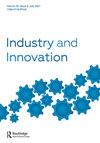Automation, firm employment and skill upgrading: firm-level evidence from China
IF 4.2
3区 管理学
Q1 ECONOMICS
引用次数: 3
Abstract
ABSTRACT The present empirical study investigated the impacts of automation technology on employment at the firm level in Dongguan, China. Results of propensity score matching (PSM) and difference-in-difference (DID) modelling show that automation technology increases the total employment as well as employment associated with workers at all skill levels of firms, indicating that the productivity effect is stronger than the displacement effect in manufacturing firms. Furthermore, automation technology has led to the skill upgrading of employment composition, with the proportion of high-skilled labour increasing and low-skilled labour decreasing. Moreover, automation can increase labour turnover in some PSM scenarios but reduce local labour share. Automation technology also has a lasting effect on employment size and local labour share, while its impact on employment skill composition lasts only three years. In addition, automation technology substantially affects the employment composition of labour-intensive, foreign-invested firms and firms older than six years.自动化、企业就业和技能升级:来自中国的企业层面证据
摘要本实证研究调查了自动化技术对中国东莞企业层面就业的影响。倾向得分匹配(PSM)和差异分析(DID)模型的结果表明,自动化技术增加了企业所有技能水平工人的总就业以及相关就业,表明制造业企业的生产力效应强于替代效应。此外,自动化技术导致了就业结构的技能升级,高技能劳动力的比例增加,低技能劳动力的比重下降。此外,在某些PSM情况下,自动化可以增加劳动力流动,但会降低当地劳动力份额。自动化技术对就业规模和当地劳动力份额也有持久影响,而其对就业技能构成的影响仅持续三年。此外,自动化技术对劳动密集型外商投资企业和六年以上企业的就业构成产生了重大影响。
本文章由计算机程序翻译,如有差异,请以英文原文为准。
求助全文
约1分钟内获得全文
求助全文
来源期刊

Industry and Innovation
Multiple-
CiteScore
8.10
自引率
7.70%
发文量
41
期刊介绍:
Industry and Innovation is an international refereed journal presenting high-quality original scholarship of the dynamics of industries and innovation. Interdisciplinary in nature, Industry and Innovation is informed by, and contributes in turn to, advancing the theoretical frontier within economics, organization theory, and economic geography. Theoretical issues encompass: •What are the institutional underpinnings for different organizational forms? •How are different industrial structures and institutions related to innovation patterns and economic performance?
 求助内容:
求助内容: 应助结果提醒方式:
应助结果提醒方式:


